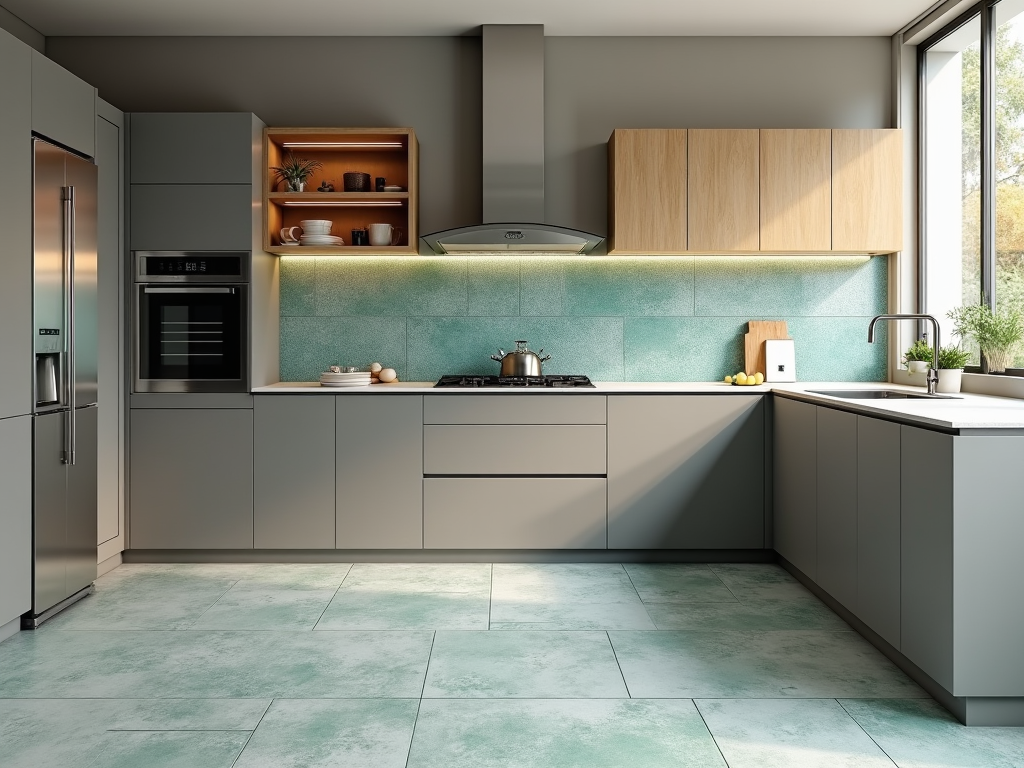Choosing the right type of tile for your home or commercial space can be a daunting task given the broad range of options available. Tiles are not just about aesthetics; the choice impacts functionality, durability, and maintenance. This article dives into the 12 different types of tiles, as explained by experts in the field. Each type has its unique characteristics and is suited for certain applications. Read on to explore which tile fits your specific needs and preferences.
Ceramic Tiles

Ceramic tiles are perhaps the most popular and versatile option on the market. Made from clay and hardened by firing at high temperatures, ceramic tiles are known for their moisture-resistance and durability. These tiles come in a wide array of colors, patterns, and finishes, making them suitable for both walls and floors in various settings. Experts suggest that ceramic tiles are ideal for kitchens and bathrooms, thanks to their water-repellent properties. However, it’s important to note that they are not as hard as porcelain tiles and can be more susceptible to chipping or cracking.
Porcelain Tiles

Porcelain tiles are a type of ceramic tile, but they are denser, harder, and more resistant to moisture. These characteristics make porcelain tiles suitable for heavy-traffic areas and outdoor installations. Unlike regular ceramic tiles, porcelain tiles are less porous and deliver superior performance in both hot and cold climates. They often emulate natural stone, wood, or even concrete, providing a high-end look without the high-end cost. Additionally, porcelain tiles are available in both glazed and unglazed versions, expanding their application possibilities.
Natural stone tiles lend a touch of luxury and elegance to any space. Comprising materials like marble, granite, slate, and travertine, each type of stone tile carries its unique aesthetics and durability characteristics. While natural stone tiles can be more expensive and require sealing to protect them from stains and moisture, their distinct beauty often outweighs these downsides for many homeowners. Each stone has different grades and thickness levels, allowing you to tailor your choice to both budget and design interest. It’s important to consult with an expert to understand the maintenance needs of each type.
Glass Tiles
Glass tiles offer a modern and reflective surface that increases the perceived depth and space of any room. They are often used in mosaics to create stunning visual effects in kitchens and bathrooms. Not only do glass tiles provide a sleek aesthetic, but they are also impervious to moisture and staining. Because of this resilience, they are an excellent choice for wet areas. However, they are more prone to breakage, so careful installation and maintenance are necessary. The transparency and light-reflecting properties can create an illusion of a larger, more open space.
Vinyl Tiles
Vinyl tiles are gaining momentum thanks to their affordability and ease of installation. These tiles are made from synthetic materials and are available in numerous styles and designs, some of which mimic the appearance of natural stone or wood. Vinyl tiles are softer and warmer underfoot compared to stone or ceramic tiles, making them a comfortable choice for residential spaces. They are also water-resistant, making them suitable for bathrooms and kitchens. However, it’s worth noting that despite their advantages, vinyl tiles may not offer the same long-term durability as natural materials.
Conclusion
In conclusion, the perfect tile for your space depends on several factors, including the location, your budget, and design preferences. From cost-effective vinyl tiles to luxurious natural stone, each option provides unique benefits and drawbacks. Understanding these details ensures you make a well-informed choice that aligns with both the functional needs and stylistic aspirations of your project. Whether you are revamping your bathroom or updating a commercial space, this guide serves as an essential tool to navigate the vast world of tile options with confidence.
Frequently Asked Questions
1. What is the most durable type of tile?
Porcelain tiles are considered the most durable due to their resistance to moisture, wear, and temperature changes.
2. Can I use ceramic tiles outdoors?
Ceramic tiles can be used outdoors, but it’s best to choose those specifically rated for exterior use for enhanced durability and moisture resistance.
3. How often do stone tiles need to be sealed?
Stone tiles generally need to be sealed every 1 to 2 years to maintain their appearance and protect them from stains and moisture.
4. Are glass tiles hard to maintain?
While glass tiles are easy to clean due to their non-porous nature, they need careful handling to avoid breakage during cleaning.
5. What are the environmental considerations for choosing tile materials?
Natural materials like stone or ceramic are more environmentally friendly, whereas synthetic options like vinyl can have a larger ecological footprint.


